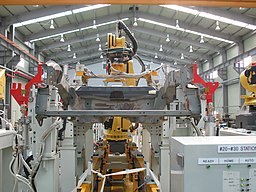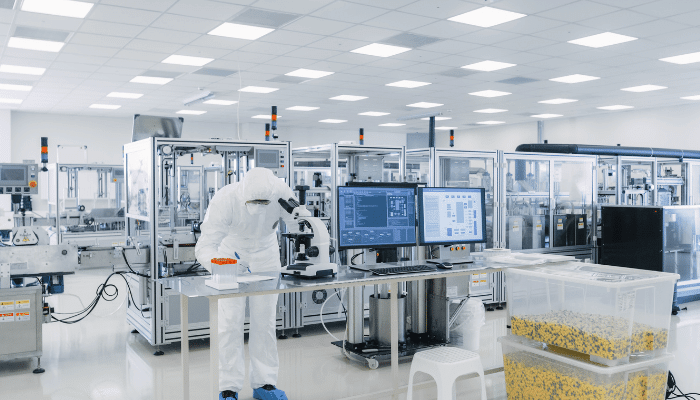The manufacturing industry is constantly growing, and evolving quickly. There are lots of ways for you to improve your efficiency on the plant floor. IIoT devices are the key to making this happen in today’s market. Those devices enable you to gather data directly from your manufacturing equipment, process that data, and get real-time visibility into what’s going on on the factory floor. With so many brands, products, and solutions out there just finding the perfect solution for you can be a big challenge.
Like I mentioned, and you likely know this yourself, the industry is moving at a fast pace. You need to implement the right tools and techniques to remain competitive, so what should you be looking for?
A lot of the devices that are being used and sold today might work for now, but they will be completely outdated in the coming years. What separates a tool that is going out of date, and a tool that will give you the flexibility and scalability you need now and that you will be able to use effectively for decades?
Industry 3.0 devices vs Industry 4.0 devices
The answer is Industry 4.0 devices.
Industry 3.0 devices can do their job, but not much more. Those devices lack the features and capabilities to create flexible and scalable IIoT solutions to move a company towards becoming a digital factor.
Our definition of the best Industry 4.0 devices are devices that follow 4 principles for best-in-class IIoT devices.
- Report by exception- Data should be pushed out when it changes; decreases the load on communications and processor time for all kinds of devices including PLCs.
- Edge Driven- Push decisions for data as close to the edge as possible; we shouldn’t be sending up completely raw, millisecond data to the Unified Namespace.
- The Solution is Lightweight- Use protocols like MQTT that are lighter, less verbose; it makes them easier to work with, better for communications.
- Open Technologies- Use tools that don’t have a proprietary bent, that can be leveraged with other tools from companies. When a company says you must use all the tools in their stack, run away…they’re mostly helping their shareholders, not you.
Devices that don’t share these qualities are more difficult and expensive to work with. They also often don’t have the capabilities internally to run a variety of tools that can add to the flexibility and scalability of that device within the larger solution. With that groundwork laid out, let’s review a few of our favorite and most commonly used IIoT Devices that are Industry 4.0 capable.
DXM from Banner Engineering
The first IIoT device I want to talk about is a DXM series controller from banner Engineering. The DXM Controller can connect to wired, or wireless sensors. It communicates on a 900MHz secured and encrypted network. Another nice feature of this product is there is a scripting language that can be used to write some basic logic. This logic can perform small tasks such as turning on a light or sending an email or a text. Lastly, the device can push out its data to any endpoint via HTTPS, like a REST API.
These may sound like small features but small devices like this can have a powerful impact on getting valuable data at the edge and contribute to improving efficiency.
These products are also great for connecting legacy equipment and other old equipment with wired or wireless sensors as well as analog and digital I/O. This is really helpful when you are not able to directly connect to a CNC machine or a PLC machine.
Groove Rio, Epic from Opto22
These are another couple of products that we think are great, and fit in perfectly with the Industry 4.0 ideas and standards. The principles behind the Groove Rio and Epic products are right up our alley. Both of these products are great as they are extremely compatible with the connectivity that Industry 4.0 is all about.
There are a number of ways the devices fit the 4 principles for Industry 4.0:
- Report by exception – They use MQTT SparkplugB protocol among others to enable one-way communications.
- Edge Driven – The device has the onboard capacity to run NodeRed and other tools to add logic for processing data locally before sending it out.
- Lightweight – Again, it’s supposed lightweight protocols like MQTT.
- Open Technology – You can work with the device using open standards and tools, and don’t need to pay extra fees for extra tools.
These make for a great product with great flexibility to meet the needs of many different companies, that have very specific problems requiring a tailored solution.
They allow us to use technologies that are well suited for IIoT which includes the MQTT data protocol with SparkplugB, as we’ve said above. If you’re interested, check out this great article I just read that goes more in-depth on this topic.
Industrial PCs
An industrial PC is an immensely valuable device to have. It is exactly what it sounds like. A PC that would typically run Windows or Linux, small, ruggedized, and built to be used in harsh environments.
There are a couple of different versions of Industrial PCs that we like to use at Ectobox. One of them is from Siemens and the other is from OnLogic. Both of these are great products. The one from Siemens is a bit more expensive and has some more capabilities and will work in more demanding environments. These machines allow us to use Kepware, a machine connectivity tool from PTC which is industry standard, and other machine connectivity tools to connect to and pull data from various equipment.
These Industrial PCs work by connecting to a PLC or controller on a CNC machine via an ethernet connection RJ45 Plug. This connects directly to the machines and then we have the ability to pull out all of the data directly. Then we can process that data at the edge as needed and send that data up to our IIoT platform whether that platform is on-premise or the cloud.
So which IIoT Devices are best for you?
All of these IIoT devices are great and are built to be around for a long time. Don’t make the mistake of implementing a device that does not have the connectivity, flexibility, and longevity to be relevant in the coming years. Industry 4.0 is, in part, centered around machine connectivity across the plant, and even across multiple plants remotely.
Like I mentioned earlier, we know that everyone has a different situation that is unique to them. Some of these products might fit into a certain company’s situation, or maybe not. Regardless, at Ectobox we have helped a large number of manufacturers tackle issues, or just take the next step to stay ahead of the competition. We are more than happy to answer any questions to help you find the right solution that fits your needs. Contact us here to get in touch.







